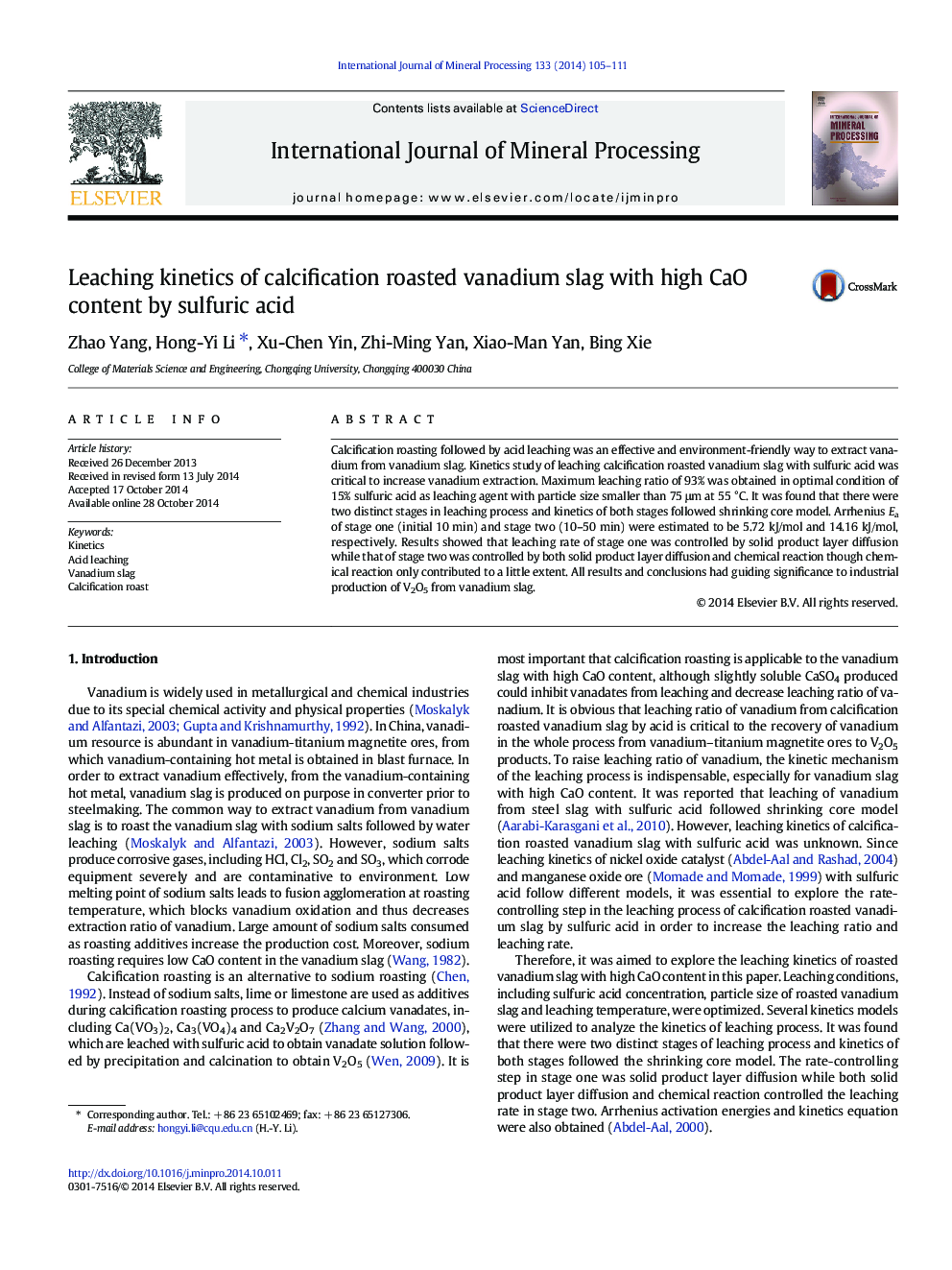| Article ID | Journal | Published Year | Pages | File Type |
|---|---|---|---|---|
| 213881 | International Journal of Mineral Processing | 2014 | 7 Pages |
•Leaching ratio of 93% was obtained in optimized leaching condition.•Leaching kinetics followed shrink core model in two distinct stages.•Diffusion through solid product layer was the rate-controlling step in stage one.•Leaching in stage two was controlled by both solid product layer diffusion and chemical reaction.
Calcification roasting followed by acid leaching was an effective and environment-friendly way to extract vanadium from vanadium slag. Kinetics study of leaching calcification roasted vanadium slag with sulfuric acid was critical to increase vanadium extraction. Maximum leaching ratio of 93% was obtained in optimal condition of 15% sulfuric acid as leaching agent with particle size smaller than 75 μm at 55 °C. It was found that there were two distinct stages in leaching process and kinetics of both stages followed shrinking core model. Arrhenius Ea of stage one (initial 10 min) and stage two (10–50 min) were estimated to be 5.72 kJ/mol and 14.16 kJ/mol, respectively. Results showed that leaching rate of stage one was controlled by solid product layer diffusion while that of stage two was controlled by both solid product layer diffusion and chemical reaction though chemical reaction only contributed to a little extent. All results and conclusions had guiding significance to industrial production of V2O5 from vanadium slag.
Graphical abstractFigure optionsDownload full-size imageDownload as PowerPoint slide
